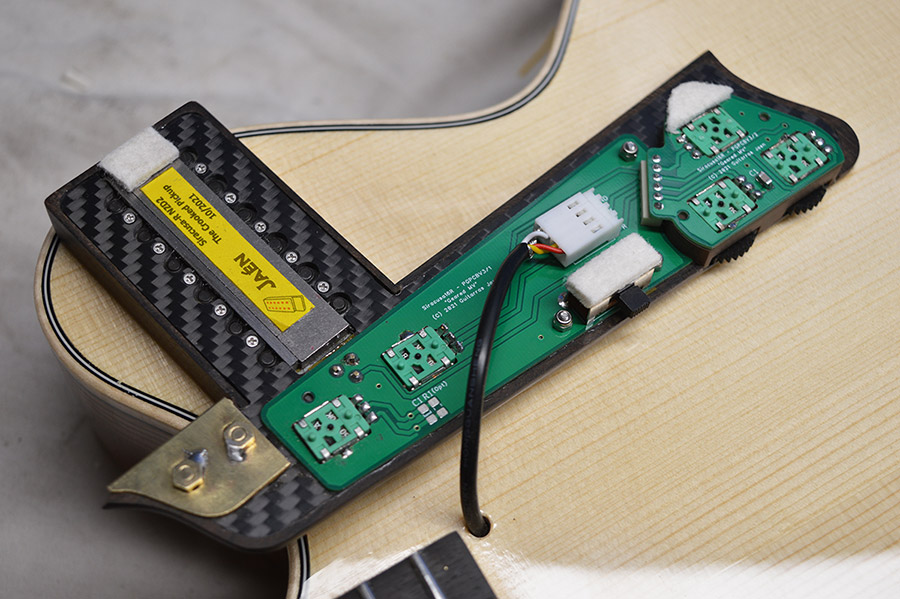Recently I had to modify the pickups that I use for my Siracusa guitars. They had three terminals, and I wanted to add a fourth, which I will use for a really interesting variation that I’ll explain soon. I thought that I could take a few photographs and explain how crazy it is to do this. Here we go.
A coil:

Simple isn’t it? Well, it isn’t simple at all to make. Under that thin paper you’ll find the thin copper wire, between 6000 and 7000 turns. It is not wound around a a bobbin, as in conventional pickups. This is because floating pickups must be slim due to the limited space in archtop guitars. That coil has been removed from the jig used to make it, in a process of around 20 steps. The method I use is the final evolution of many previous failed methods, with many coils and many pickups in the recyling can.
I make pickups from a small block of wood, usually ebony or ziricote. Here you can see how I use a Delrin jig (left) to align the terminals of a pickup while I apply adhesive for the terminals of another:

The operations on the wooden case that lead to the final product are more than 40, which include nine different CNC cutting operations.
I don’t use the coils as building blocks. Instead, I group two coils together with a FR4 plate in structures that I call chassis:

They are simpler to make than coils, but they need another 12 steps.
Epoxi filler:

The wooden case is not cut until the epoxi is cured. If it was cut earlier, the walls would break.

These are some pickups, still without the magnet, not sanded, not buffed, but out of the working table. The one made of ziricote is a special type, a crooked pickup, that I explained recently in another post.

When these pickups are finished and placed on the pickguard, this exotic work will make all the sense:





